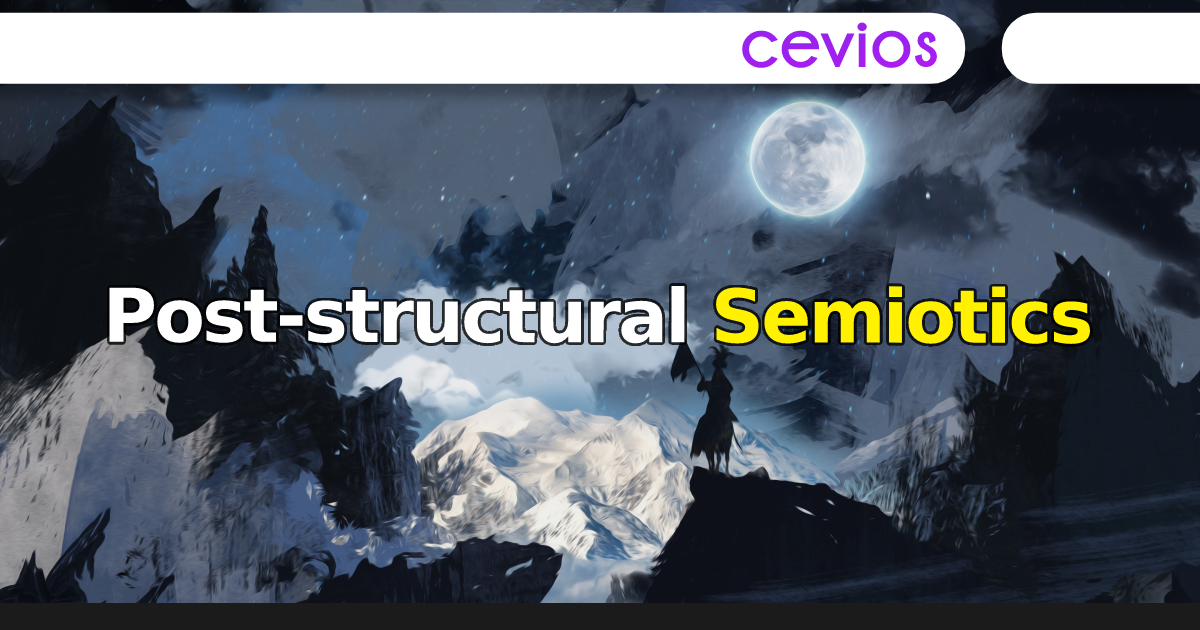Post-Structural Semiotics
According to Roland Posner, semiotics at the fin du siècle[1] became “The art of revealing or creating meaning in discourse. Semiotics becomes “semanalysis” (Kristeva,1969a) or the “deconstruction” of discourse (Derrida 1967a; de Man 1979, 1993; Culler 1982)” (Posner, “Post-Modernism, Post-Structuralism, Post-Semiotics?” p.23)
It then went from science to art, from logos to creativity, and from strict and limited methods to observations and objects of experimentations to liberty.
Also, art is indeed something that can be learned, but before anything, it is a gift and as a whole a product of creativity, we can then talk about good and bad semioticians.
1. Semanalysis
Semanalysis merges semiotics and psychoanalysis in a framework to understand how texts are formed and deciphered. However, according to Oxford Reference (“Semanalysis”), the project has failed and then abandoned by its author; Nonetheless, it has given birth to a key concept in critical theory, known as intertextuality[2].
2. Deconstruction
Jacque Derrida’s deconstruction criticizes logocentric oppositions[3] inherited from ancient Greece by showing, for example, that the existence of one does not necessarily imply the absence of the other. Its goal is to go beyond the conventional ideas that privilege the ones over the others.
Besides, it criticizes the Saussurian sign that attaches to each signifier a stable signified. It demonstrates that the relation is uncertain and that each signifier can be linked to indefinite signifieds: For instance, the signifier “Water” may refer to “Glass of water”, “Drops of water”, “Rain”, “H2O”…, etc. On top of this, each signified becomes the signifier of another signified giving birth to infinite semiosis.
Deconstructionist theory gave rise to the term “differance” combining two words “difference” and “differ” to express how signifiers, in a text, are defined by each other and that this process necessitates that the meaning of each one of them to be differed.
From this critique, we can learn that the meaning is not a preconstructed datum: It is the product of text.
3. Post-Structural Semiotics VS de Saussure’s Semiology
| Semiology | Post-Structural Semiotics |
| Sign | Semiosis |
| Syntagm / Paradigm | Syntagm |
| Synchrony / Diachrony | Intertextuality |
| Code | Discourse |
Post-structural semiotics criticizes and corrects the Saussurian sign. It considers it in different activities such as the production and interpretation of meaning; It, therefore, deals with semiosis.
Also, as it is materialistic, it only takes into consideration the combination of elements on the syntagmatic axis uniquely.
Moreover, it abandons the ideas of synchrony and diachrony to embrace intertextuality.
Finally, in this new paradigm, the attention has shifted from code to discourse[4]. (Posner, “Post-Modernism, Post-Structuralism, Post-Semiotics?,” p.24)
[1] The end of the XXth century: Since the 70s and the clear emergence of postmodern movements and ideas in literary and academic writings.
[2] Intertextuality means that texts are always linked to other texts either directly, in the case of citation, or indirectly, in the case of allusion.
[3] For example: nature/culture, good/bad, speech/writing, day/night, etc.
[4] In other words, discourse is code in use. (C. Kerbrat-Orecchioni in Gillet, “Des Dangers de l’abus Du Schéma Jakobsonien Sur La Communication,” p.2)
“Post-Structural Semiotics” is part of:
Khettab, Sid Ahmed. Semiotics and Semiology: From Sign to Semiosis and From Code to Discourse [Course]. 2021. DOI.org (Datacite), https://doi.org/10.13140/RG.2.2.23509.55520. [Online Article]
KHETTAB, Sid Ahmed. Semiotics and Semiology: From Sign to Semiosis and From Code to Discourse. Independently published, 2021, https://www.amazon.com/Semiotics-Semiology-Sign-Semiosis-Discourse/dp/B0959N6111. [Paperback]

